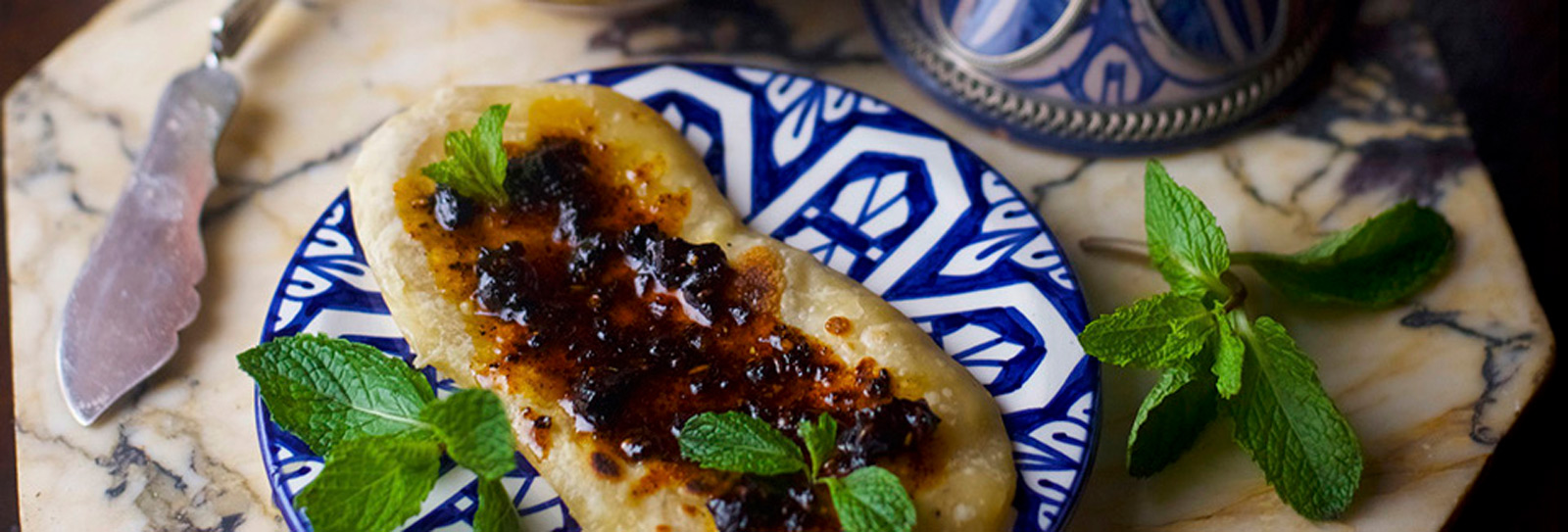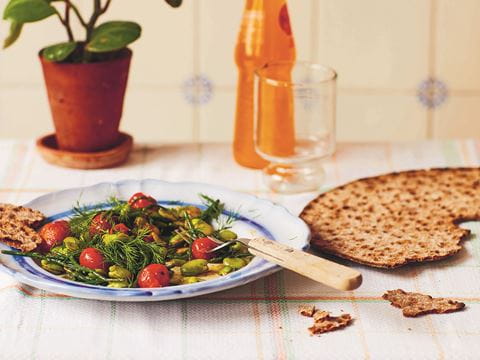
At Home with Harisa
Harisa has been widely popular in North Africa for 500 years, ever since dried peppers crossed the Atlantic and met olive oil. It’s easy to make on your own—but make enough to share with friends. One taste and you’ll know why.
I barely noticed winter’s chill that season as I began rubbing harisa’s mahogany magic onto my roast chicken, spooning it over my fish and brightening my roasted vegetables. Spicy, sure, but dark and mysterious in flavor as well as color. Just pre-paring it filled the kitchen with an intoxicating fragrance that compelled me to make it over and over. (Friends demanded jars of the stuff.) I have been in love ever since.
Today harisa is so woven into the cuisines of North Africa that you might assume it has always been there, but if there has ever been a great reason for immigration, free trade and porous borders, this is it. There would be no harisa if one of the New World’s most famous vegetables hadn’t turned up the heat on virtually all of the Old World’s cuisines.
Before chilies came to the Old World, there were varieties of black pepper, Szechuan pepper, cloves, cinnamon, ginger, mustard and horseradish to warm palates from China to London. Ancient China and the Mideast had salty condiments like soy, which was originally a paste, and the equally salty murri in the Fertile Crescent. Black pepper, though both widespread and prized, was rarely a stand-alone condiment—unlike mustard, which has been on the menu in China for at least 2,500 years and appears in medieval recipes from the Middle East, Africa and Andalusia as well as Europe since Roman times.
Soon after capsaicin-bearing New World peppers landed in North Africa, cooks began using local sweet spices like caraway and coriander to transform dried peppers into early variations of the harisa that now, some six centuries later, is enjoying a new global popularity. Walk through New York’s West Village or a few boulevards in Paris, and you find it spooned over falafels or heating up a tagine. From Spain to San Francisco, it’s even showing up in non-traditional recipes like a grapefruit vinaigrette or a salad with wheatberries, carrots, dates and yogurt. I have been known to add it to mayonnaise to take a chicken sandwich to an unprecedented level; blend it with brown butter on Brussels sprouts; even dot it on pizzas. And why not? Its complex heat seems to bless everything it touches, and yet it is easy enough for anyone to make.

My own favorite recipe (above) remains close to the harisa I fell in love with. Instead of reconstituting the dried chilies, I toast them to concentrate their flavor. Then I pulverize them, together with spices and garlic, and I stir in the oil at the end. It keeps at least a year in the fridge—if you can let it last that long. My very favorite way to have it is slathered with honey on a buttery flatbread such as a crepe-like Moroccan m’semme, sprinkled with black olives and sometimes a bit of goat cheese. This addictive combination of hot, sweet and salty is a popular street food in North Africa—edible evidence of why chilies spread through the world like wildfire with every bite.
You may also be interested in...

A View of Our Global Food Chain Through George Steinmetz's Lens
Food
In his latest book, Feed the Planet, photographer George Steinmetz visits nearly every corner of the world to record diverse yet linked aspects of the global food chain—including aquaculture.
How California's Date Fruits Became America's Arabian Superfood
Food
History
In recent years in the United States, dates have been trending as a nutrient-dense, easily transportable source of energy. Nearly 90 percent of US-grown dates are from California’s Coachella Valley. Yet the date palm trees from which they are harvested each year aren’t native; they were imported from the Arab world in the 1800s. Over the years, they have become a part of Coachella’s agricultural industry—and sprouted Arab-linked pop culture.
Simple Summer Salad Recipe by Sally Butcher
Food
This recipe serves up one of London-based food writer Sally Butcher's favorite lunches—a perfect mezze dish of beans.
